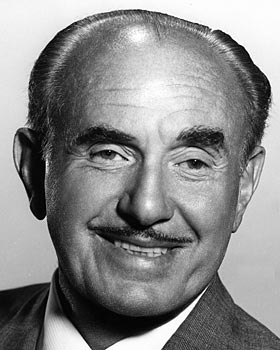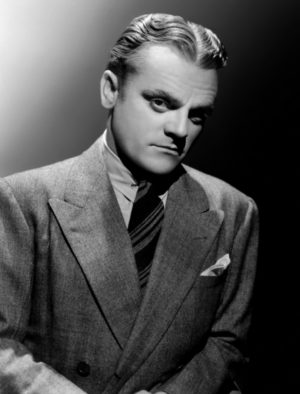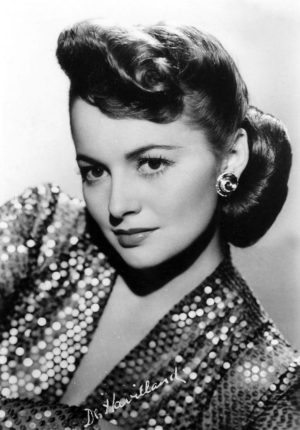Peonage in Hollywood
THE WAYS Jews exploit Whites and other Gentiles hasn’t changed much over the millennia. Differences are superficial and terminological, but the essence remains the same. (ILLUSTRATION: Olivia de Havilland, who fought the Jewish studio system)
Sex slavery, in which Jews and other non-Whites prostitute and traffic in White girls on a massive scale, is the most conspicuous example. Whether it is trafficking in the conventional sense, industrial scale pornography, or mass child rape and prostitution (including murder) as in Rotherham, England, and elsewhere in the “West,” it is still White slavery.
The fact that governments permit such evils to occur, or even legalize them (smirking, for example, that pornography is “free speech” while outlawing free speech), merely makes governments, politicians, prosecutors, police, secret police, and judges criminals as well.
In a different field, professional football in the U.S. and soccer abroad (there is a move to replace football with soccer to homogenize world sports) display many parallels with Roman gladiatorial contests. Giant stadiums and heroes who physically batter one another for the entertainment of decadent spectators unmistakably hearken back to the earlier era of decay. Wealthy proprietors, many of them Jews, in a sense “own” their Gentile players much as they would chattel. This is true even of highly-paid sports stars.
The Hollywood star system during the studio era presents another example of human exploitation in modern garb. The fact that, like pro sports, a handful of players were highly compensated masks an otherwise fundamental similarity with previous forms of exploitation. Strip away superficial qualities like money and fame and the underlying phenomenon appears, just as eliminating lies like “freedom” and “freedom of speech” reveals the mass production and dissemination of pornography to be alien, race-based sex trafficking and prostitution of native girls.
The Rift Between Studio Executives and Actors During the Great Depression
For the benefit of the uninitiated, moviemaking in the United States and elsewhere has been dominated by Jews from the beginning. (See, e.g., Neal Gabler, An Empire of Their Own: How the Jews Invented Hollywood, New York: Crown Publishers, 1988, reviewed here; Edmund Connelly, “Understanding Hollywood, Part I: Hollywood’s Jewish Identity,” The Occidental Quarterly, Spring 2008, pp. 37-72.)
By the late 1920s and early 1930s moviemaking was a massive, culturally dominant industry structured economically as an oligopoly consisting of eight big studios classified into the “Big Five” and the “Little Three.” The concealed monopoly was actually based upon ownership and control of movie theaters (exhibition).
Movie actors, who were mostly White Gentiles, remained relatively docile until 1933. Under the star system the most popular actors, despite their seeming glamor and perks, were referred to as “properties,” and film historians today make observations like “the right of a studio to treat a star as chattel, as a mere investment that could be milked for all he or she was worth (product maximization).”

Some of the biggest battles by stars against the prevailing order took place at Warner Bros. Studios. (Despite their deceptively Anglo-Saxon-sounding surname, the four Warner brothers were Ashkenazi Jews from Eastern Europe originally named Wonskolaser or Wonsal.)
Irish American actor James Cagney, famous for his gangster movies, sued the studio more than once over the unfair conditions of his contract, and won in court. “I feel an actor wears out his welcome with the public if he appears in too many pictures,” Cagney told the court. “The audiences get their fill, and turn in another direction.” “There are only so many successful pictures in a personality. And don’t forget that when you are washed up in pictures, you are really through. You can’t get a bit, let alone a decent part.”

But with the onset of the Great Depression studio executives moved to further curb actors’ economic prerogatives, publicly blaming stars’ salaries for the industry’s economic woes. Studio moguls, though, remained highly paid. Throughout the Great Depression MGM’s head of production Louis B. Mayer was the “highest paid man in America.”
Among other things, studios demanded that actors take a 50 percent pay cut, agents be licensed by a central booking office controlled by the studios, moguls be forbidden by law from hiring each other’s stars, the industry’s onerous seven-year contracts be made even more restrictive, and actors’ earnings be capped.
These weren’t the only ploys the moguls used. In 1934, for example, they “taxed” actors, involuntarily taking one day’s pay from their biggest-earners and funneling it to the political campaigns of politicians who would do their bidding.
The industry was able to impose its will because of the Franklin Roosevelt Administration’s unconstitutional imposition of the National Recovery Administration (NRA) on American business. Under its auspices the movie moguls drafted a “Code of Fair Competition” for themselves, which the President incorporated into federal law by executive order.
This action spurred the formation of the Screen Actors Guild (SAG), the actors’ union, in June 1933.
The Guild said the new measures amounted to “professional slavery.” In a brief filed with the Administration the union declared that “history shows that no agreement with producers is worth the paper it is written on”; that Hollywood’s code of ethics “is the lowest of all industries”; and “every dishonest practice known to an industry . . . has been resorted to by the producers against the actors.”
The brief went on to provide statistics about actors’ salaries, noting that most actors did not make inordinate sums of money. In 1933, 25 percent of actors who were still employed made less than $1,000 gross income per year, 50 percent made less than $2,000, and 75 percent made less than $5,000. Out of these figures, 10 percent went directly to agents, and a substantial additional amount to pay for wardrobes, which were considered part of an actor’s working tools.
Olivia de Havilland’s Rebellion
Movie actress Olivia de Havilland, who turned 99 years old in 2015, was born to an English couple in Japan. Her sister was the equally famous movie star Joan Fontaine, and her cousin aircraft engineer Sir Geoffrey de Havilland, founder of the de Havilland Aircraft Company in England. De Havilland aircraft played a major role in World War II.
Like James Cagney, de Havilland was employed by Warner Bros. Studios, with which she signed a standard seven-year “option contract” in 1936. It was centered on a series of “options” the studio gave itself. At predetermined intervals — in her case, at the end of each year — the studio reserved an option to either cancel or renew her contract. De Havilland was bound to accept whatever assignments the studio gave her. If she turned down a role, became ill, or for any other reason failed to do what she was told, she would be suspended without pay.
The studio (which, of course, drafted the contract) reserved the right to tack any suspension periods onto the end of the seven years, forcing the actress to work beyond the specified time limit. Indeed, studios sometimes deliberately assigned highly paid stars roles they knew would be rejected, then suspended the actors without pay when it happened, saving themselves large sums of money and effectively slashing stars’ reported salaries.
At the end of de Havilland’s seven years Warners, which had suspended the actress without pay while she was ill, and for refusing to play certain roles, tried to compel her to continue working for the studio beyond the seven-year limit imposed by law. It contended that the California statute limiting terms of employment to seven years meant seven years of “actual service” — i.e., that the law did not toll during periods of suspension.
In a major legal move that resulted in a landmark decision, de Havilland took the studio to court.
The trial judge, pointing to the contract’s gross one-sidedness, ruled in a declaratory judgment that the purpose of the statute was to protect employees “from contracts of peonage or indefinite servitude” by limiting the time they could be bound, or prevented from seeking other work.
If the studio’s interpretation were permitted, it might easily result in a contract “being indefinitely extended, even to the point of constituting life bondage for the employee.”
It would even be possible, if an artist should incur the ill will of a producer, to require her to portray roles which would entirely destroy her popularity and value as an artist, and because of her refusal to demean herself, suspensions and elections to extend the term of the contract would prevent her from ever seeking other employment. She might suffer long periods of illness and the life of the contract might at the option of the producer be extended, as has been said, indefinitely, thus precluding her from ever working for any other employer. It was to prevent such a condition of peonage or serfdom that the statute was enacted.
The court ruled in favor of de Havilland.
Warners appealed the decision to the California Court of Appeal (in 1944 still called the District Court of Appeal), but lost. The decision against the brothers Warner was upheld.
There is an enlightening coda to the story. Though the Court of Appeal upheld the trial judge’s ruling, at the studio’s behest it tossed out his injunction forbidding the defendant (Warner Bros.) from interfering with de Havilland’s employment elsewhere now that her contract with it had expired.
The appellate judges wrote: “There is nothing in the record that would justify a belief or even a suspicion that [Warner Bros.] will not respect and abide by the final declaration of the court.”
So what happened? The corporation reacted to the decision by circulating a letter to other studios that had the effect of blacklisting de Havilland for two years.
Conclusion
The de Havilland case, like so many other aspects of modern life, is best understood by making explicit and analyzing the Jewish-Gentile dynamics underlying it. For Jews, law is something to be manipulated, twisted, violated and bent to their will. It is another arena for warfare. Law does not have the same meaning for them that it has for Whites.
As a consequence, law is transformed from an instrument of justice and an indispensable adjunct to social progress into a tool of oppression designed to give Jews whatever they want, regardless of the costs to anybody else.
The precedent established by the English actress in De Haviland v. Warner Bros. Pictures (1944)* remains a core tenet of labor law to this day: “The seven-year rule lurks anywhere in the business where talent — be they actors, directors, agents or executives — sign successive options to perform unique services without a reasonable window of time between deals,” Reuters noted in 2007. (“De Havilland lawsuit resonates through Hollywood,” August 23, 2007)
Thanks to Olivia de Havilland, old-style option contracts are no longer used in movies and television, though — surprise! surprise! — they remain central to the recording industry and professional sports.
*The California trial and appellate courts both spelled de Havilland’s name wrong, using one “l” instead of two.







I think the entire movie industry – not only in America – was created primarily to allow old, unattractive men – studio owners, producers, directors, script writers, most of them Jewish – access to attractive women, most of them of Celtic or Germanic blood. Women who, under normal circumstances, would never even spit on such men, but who will, being women, submit to lures like ‘I can make you a star, baby.’
The fact that movies – and, later, TV – were the most powerful propaganda tool ever invented prior to the internet and can make them oodles of money are just pleasant side effects.